I. What Is A Panel Bender
The panel bender is a machine with functions similar to the press brake but is more automatic and has more features. In the past, manual bending machines were used for metal bending. With the continuous progress of technology, sheet metal forming has entered the era of automation.
Sheet metal bending can be divided into manual, semi-automatic, and full-automatic bending centres. Automatic tool changing systems, measuring systems, etc., improve metal bending efficiency. Then came the panel bender, which has functions similar to those of the traditional press brake.
Manual panel benders offer simplicity and affordability. However, they do require skilled operators and are not as efficient for large-scale production. Semi-automatic panel benders offer a blend of manual and automated features, which can reduce the need for constant manual intervention.
The blade of the panel bender can form a flange in the horizontal direction, and the blank holder in the other direction can keep the material stable. Standard bending blades can produce many types of radii. The bending of the panel bender will not leave marks.
Compared with the bending workpiece of the press brake, it will be more aesthetic and clean. Compared with the previous press brake, the panel bender has the advantages of being labor-saving and high-speed.
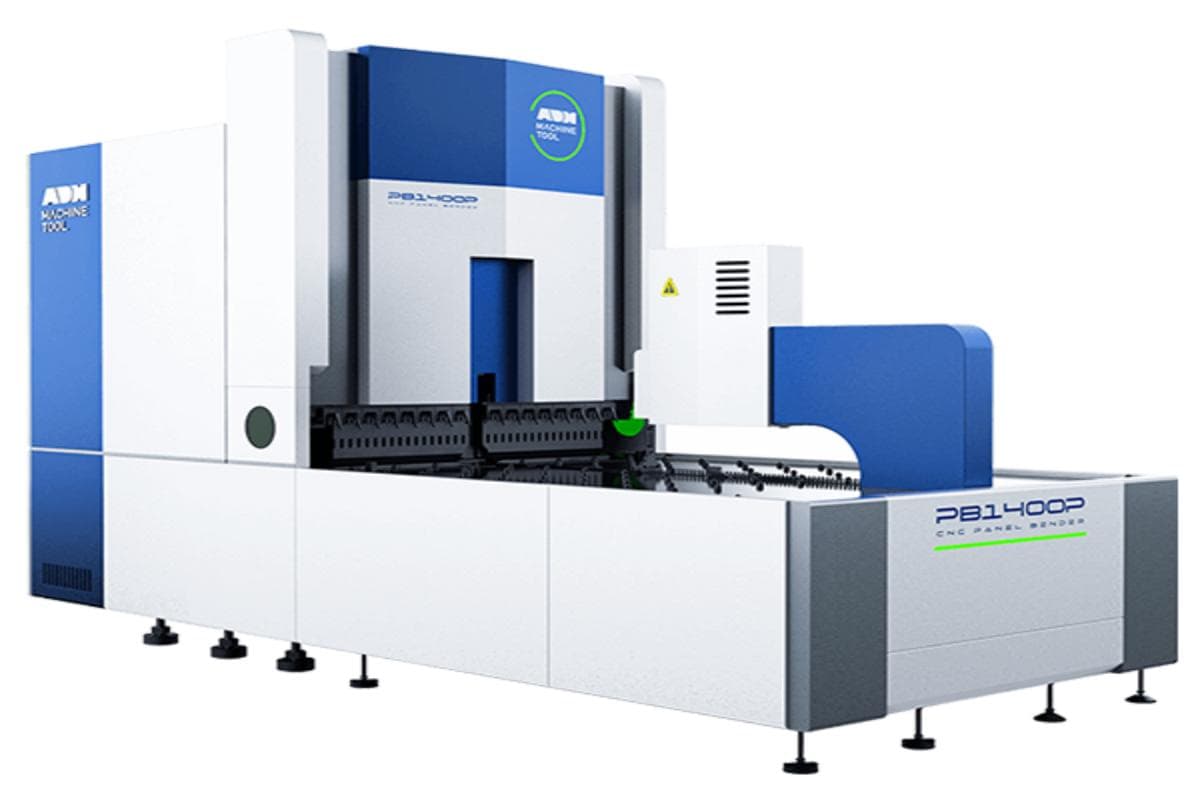
The panel bender is a highly versatile tool that can perform fully automatic bending processes, including automatic loading and unloading of tools, feeding, measuring, bending, and outputting. It has a short bending stroke and fast feeding speed and produces highly accurate workpieces.
Special tools can be used for complex bendings, such as crimping and offset bending. However, not all workpieces are suitable for the panel bender. Generally, it is better for producing box-type workpieces as it can bend the side of the whole box at once.
Nowadays, a press brake and a panel bender connected to a robot can achieve full automation, but their functions are not as complete as those of a robot bending centre. Understanding the difference between a press brake and a sheet metal panel bender can help you choose the right machine.
II. Panel Bender Working Mechanism
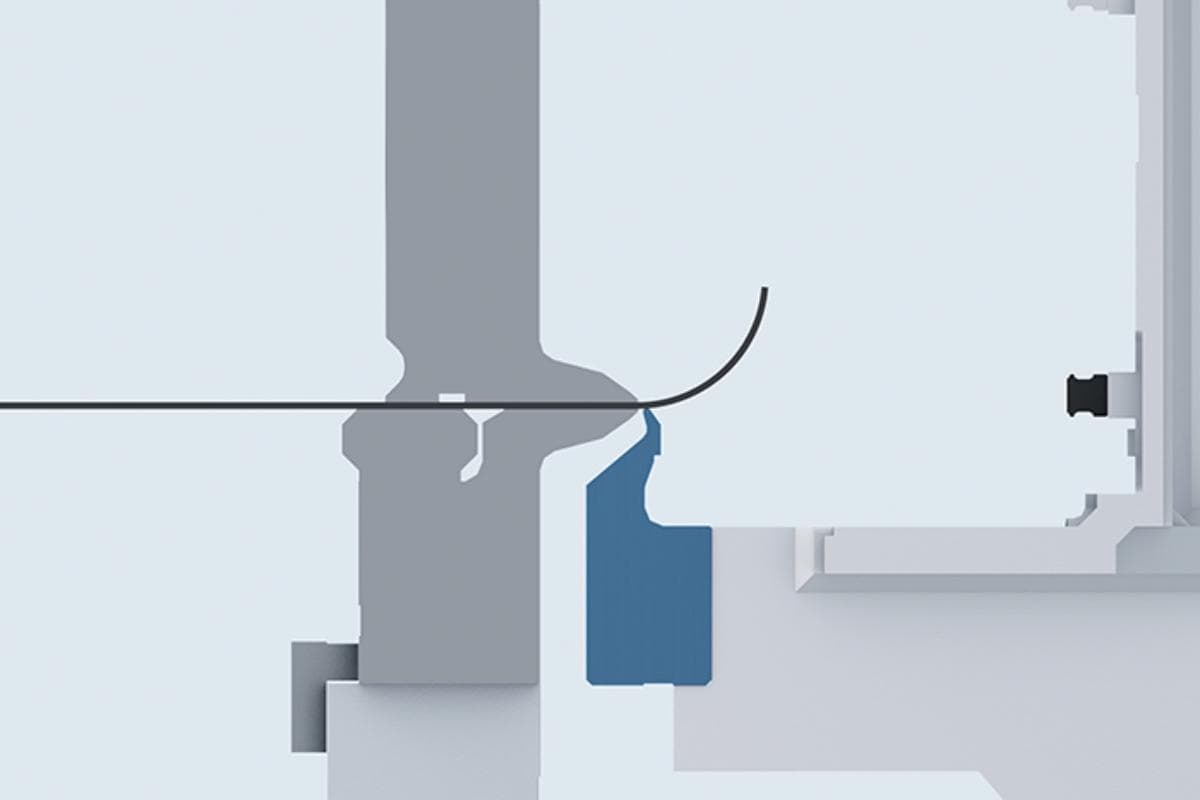
The working principle of the panel bender is different from that of the press brake. When operating the universal bending tool, the operator only needs to load the sheet metal. The workpiece positioning, bending, and reversing are controlled by the machine and software.
The panel bender does not press the metal plate into the lower die through punches. The panel bender is to fix the plate through a pair of blades and bend it up and down to form the final profile. When bending a complex angle, the blade oscillates around a single bending point until the desired angle is reached.
It does not move up and down along a straight line, which is different from the press brake. After positioning the plate, the panel bender can quickly adjust to the correct tool length. When bending, after the workpiece is positioned, the clamping beam tool clamps the workpiece in place. The lower tool moves upward to bend in a positive direction;Â The top tool moves down to bend in the negative direction.
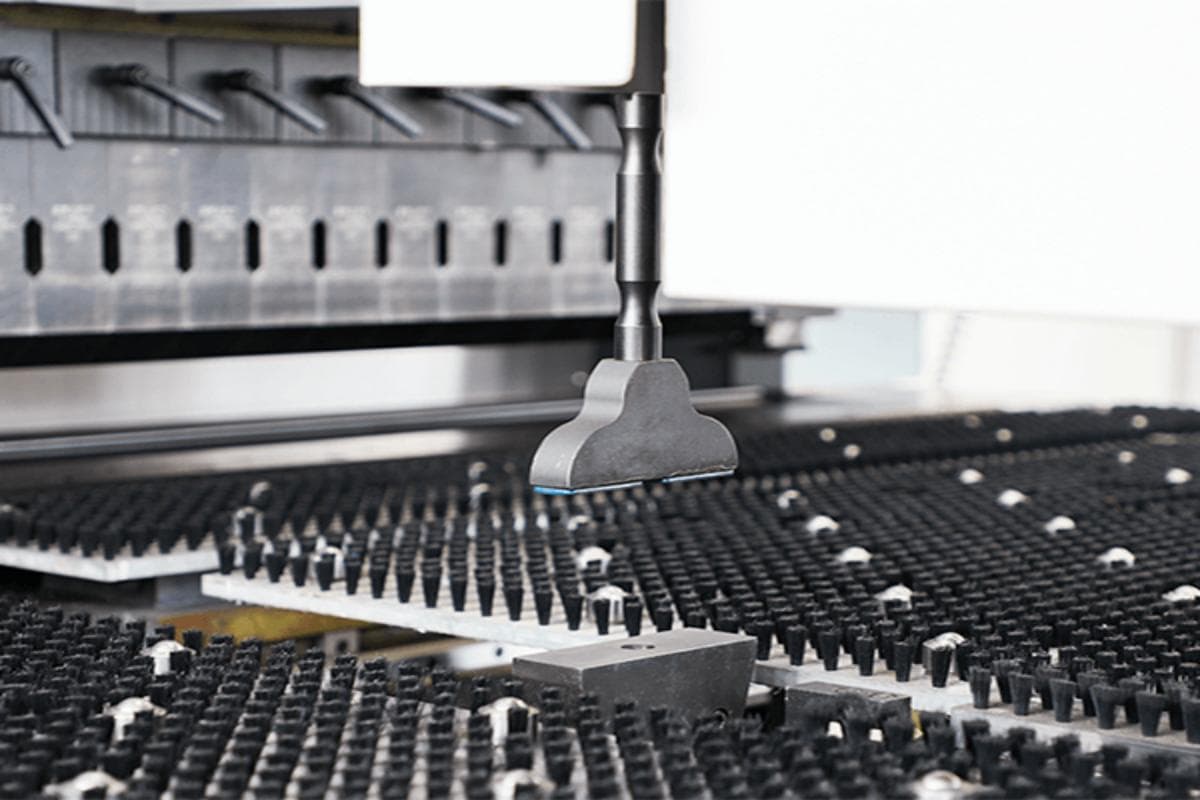
The upper pressing tool and the bottom pressing tool clamp the sheet metal in place. But they will be not directly used to bend the metal, but the upper and lower blades apply pressure to form it. The metal plate of the panel bender is placed under the clamping claw, and then the clamping claw descends and clamps the workpiece.
The longer the plate protrudes from the other side, the higher the flange produced by the throat of the machine. The panel bender is very fast and accurate. After the workpiece is positioned, the bending tools move up and down to form a flange.
In the process of side bending, the clamping claw rotates the workpiece, and the tools move up and down to bend the plate. The movement of the tools determines the bending angle and radius of the workpiece, so even curling can be formed.
The bending blade forms more than 90 degrees of material, and the tool drops to form the final curling. Box type, flat workpieces, and large workpieces are also suitable for panel benders.

III. What Are the Features of the Panel Bender
1. Advantages
The panel bender is a specialized machine used for bending sheet metal. It has an automatic tool changer, which reduces the installation time. A complete set of tools can complete the complex bending of all workpieces. The interactive area of the panel bender's tools on the surface of the metal plate is very small.
There are few scratches on the surface of the workpiece produced in this way. The tool wear of the panel bender is also very small because the friction between the tool and the metal surface is small. The whole process of the panel bender can be carried out automatically, which saves human resources.
The panel bender's bending angle change is formed by the movement of the upper and lower blades, so its tools are not as complicated as those of press brakes. The fully automatic panel benders have an automatic tool changer, which can quickly change tools to adjust the various angle bending operations in various bending tasks.
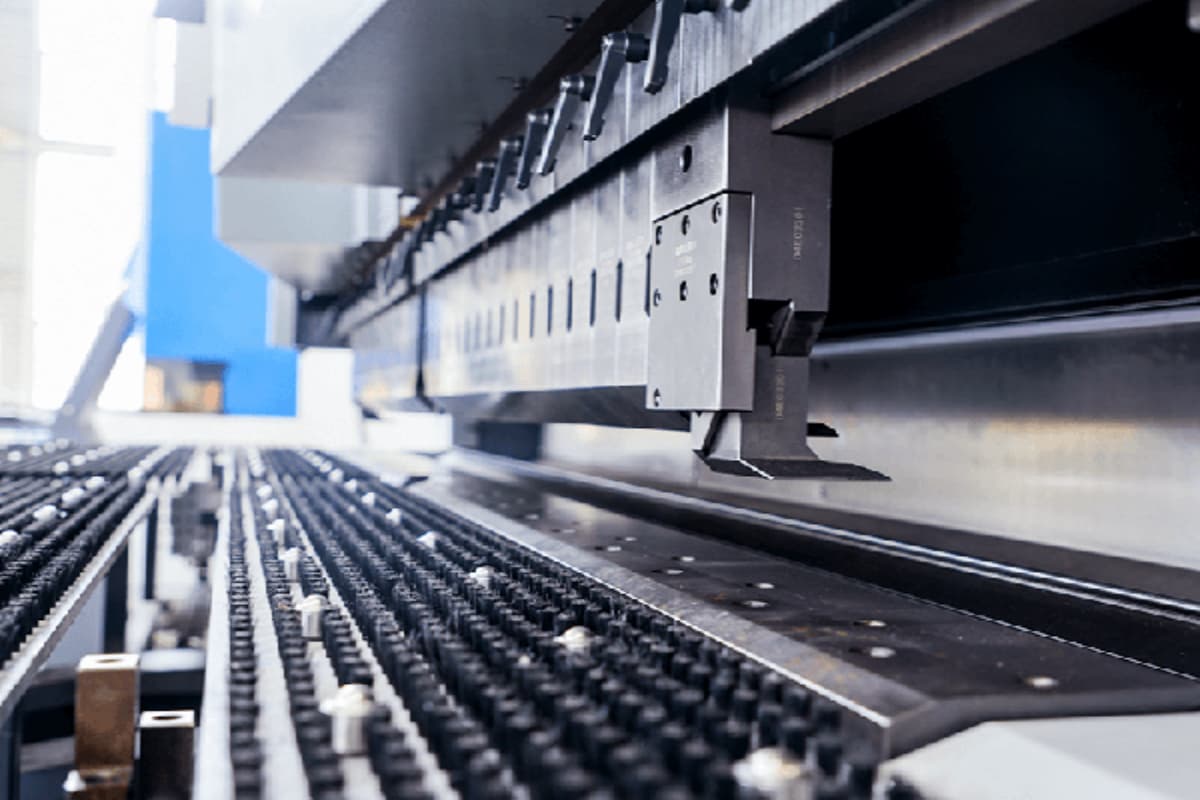
Some large workpieces with positive and negative flanges are suitable for manufacturing with panel benders. If the panel bender can automatically set the blank holder, only one operator can handle it. The panel bender only applies pressure to the metal plate through the upper and lower blades.
This bending method makes the change and spring back of the metal plate less obvious so that it can bend the whole box side at once. The panel bender's bending method is very suitable for the production of boxes, covers, and similar items.
There are some safety problems when using a modern press brake to make small parts. While the panel bender can produce smaller profiles by clamping claws or manually manipulating them.
2. Disadvantages
(1) Size and Material Limitations
Size Limitation: Panel benders are typically suitable for processing small to medium-sized metal sheets, but have limited capabilities for processing extra-large or extra-thick sheets. Bending of extra-large/extra-thick sheets requires the use of larger hydraulic bending machines or other specialized equipment.
Material Limitation: Panel benders are primarily suitable for processing relatively soft metals such as aluminium and stainless steel. However, their performance may not be ideal for processing harder metal materials like steel plates, leading to potential mold wear or reduced bending precision and accuracy.
(2) Shape and Batch Limitations
Shape Limitation: Panel benders excel at bending flat sheet materials but have limited capabilities for processing complex three-dimensional curved structures, which may require combining with other manufacturing processes such as welding.
Batch Limitation: Although panel benders offer automation advantages, their advantages may not be as significant for small-batch, multi-variety processing orders, and may even increase the time and cost associated with process adjustments and mold changes.
(3) Other Limitations
Structural Limitation: Due to the limited throat depth and opening height of panel benders, they are more suitable for producing smaller flanges. The positioning of the clamping tools and bending blades on panel benders makes it relatively difficult to perform internal bending on the machine.
Noise Issue: Panel benders can generate significant noise during high-speed operation, which may have an impact on the factory environment and operators, requiring measures such as sound insulation and noise reduction.
High Cost: Compared to conventional bending machines, panel benders are relatively expensive, making them less popular in some application scenarios.
IV. The Application of the Panel Bender
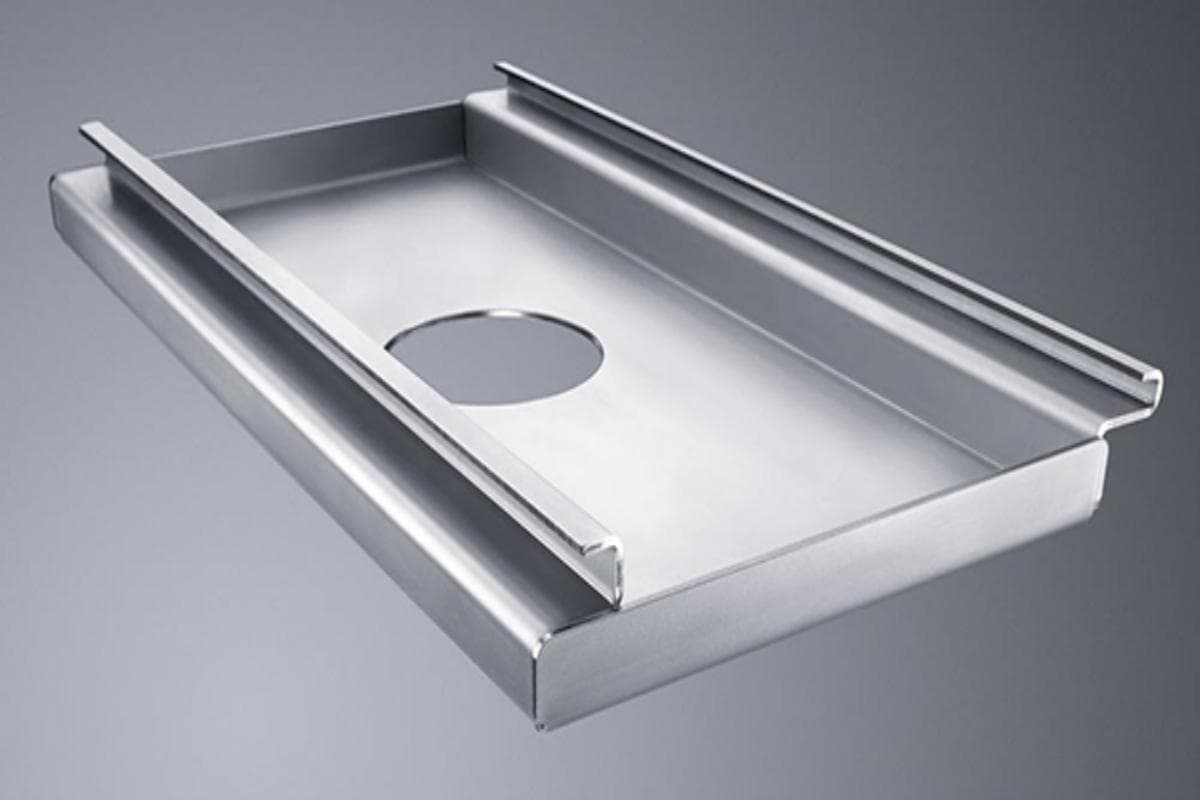
What sets panel benders apart is their versatility. Panel bender is very suitable for producing square, large, and rectangular workpieces in bending and forming metal sheets. These workpieces have high requirements for appearance and shape. The surface of the workpiece made by the panel bender has few scratches.
Such as refrigerators, air conditioners, and other electrical appliances, as well as doors, elevators, metal furniture and so on. When selecting a panel bender, it is very important to know which workpieces its bending method is suitable for.
Not only have the panel bending machine taken on more work because of the automated nature of the bending, but the units have also helped out with more complicated work, such as hems. In addition, the panel bender can achieve unparalleled accuracy and repeatability numbers in sheet metal fabrication.
V. Conclusion
Compared with the press brake, the panel bender has more complete functions, higher automation and safer operation in the metal fabrication industry. The cost of the press brake is much less than that of the panel bender, but the operation of the panel machine is simple. CNC (Computer Numerical Control) panel benders represent the pinnacle of panel bending technology.
When choosing between the press brake and the panel bender, manufacturers should consider the specific needs of their production processes. Precision and efficiency are paramount in metal fabrication, and panel benders excel in delivering both. Using the panel bending machine can also reduce the cost of manpower and material resources through efficient batch production.
Our company, ADH Machine Tool, has been providing boosts for manufacturing press brakes, panel benders, shearing, and fiber laser cutting machines for over 40 years to meet different customers' production needs. Our product experts can provide you with suggestions to choose the most appropriate and cost-effective machine.
Embroidery Patches,Sweatshirt Embroidery Patch,Self-Adhesive Embroidery Patch,Embroidery Eagle Patch
Topwell Crafts Co., Ltd , https://www.topwellmetal.com